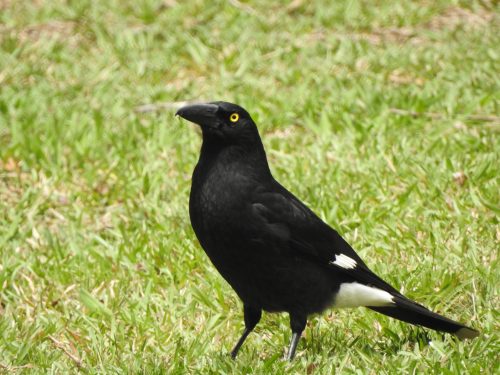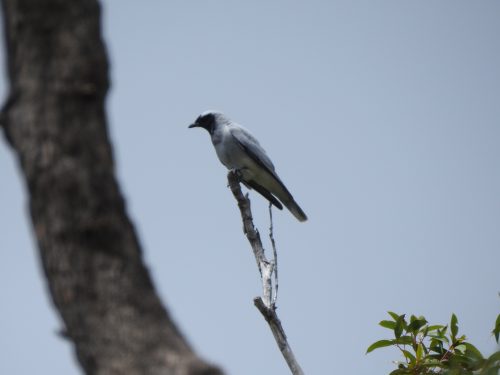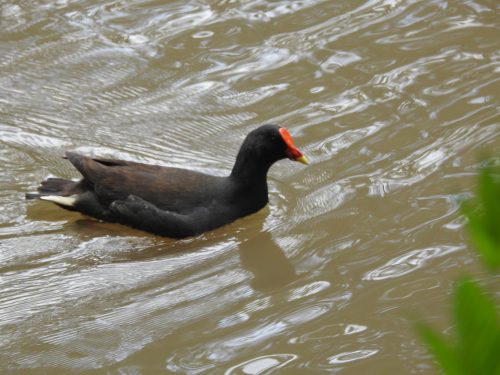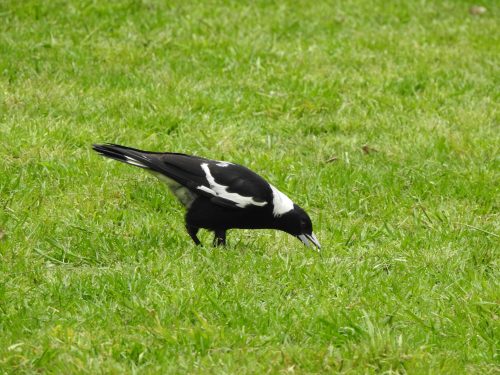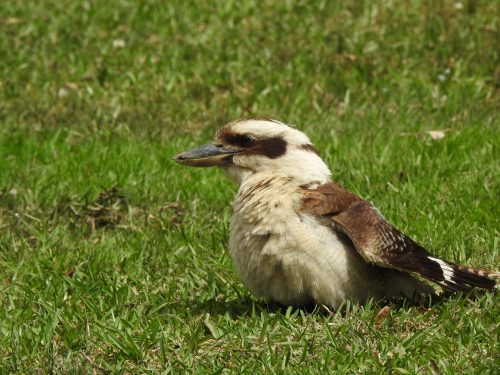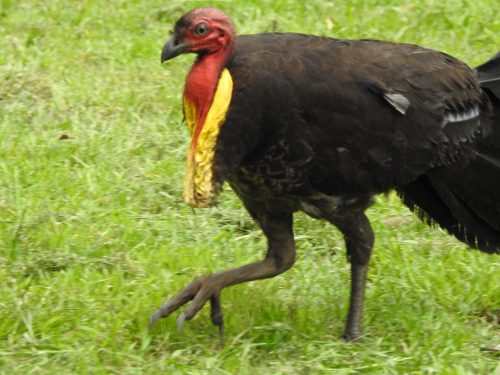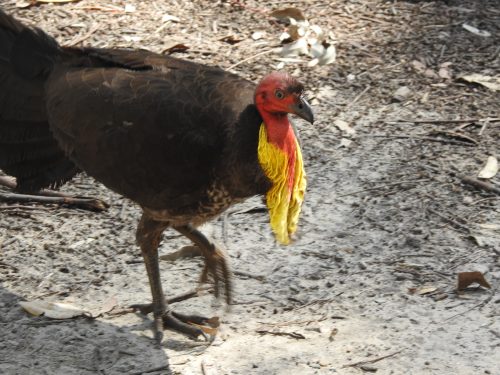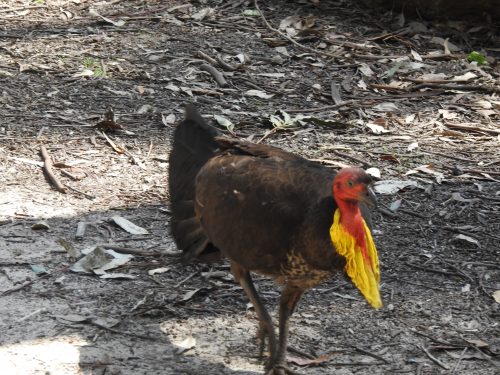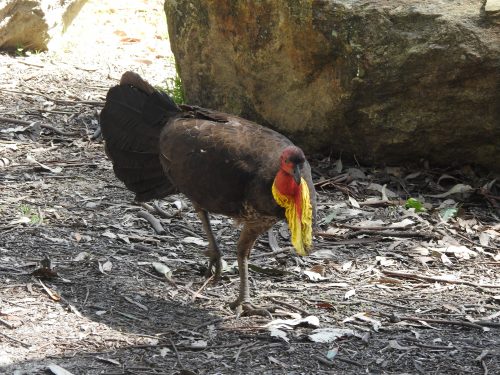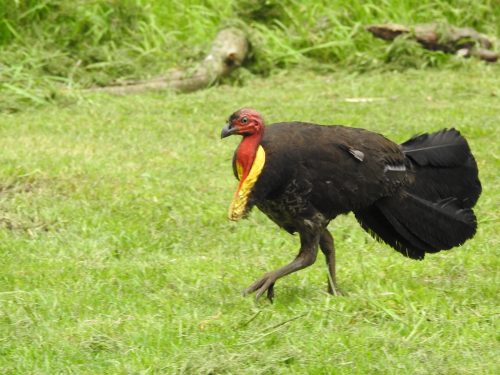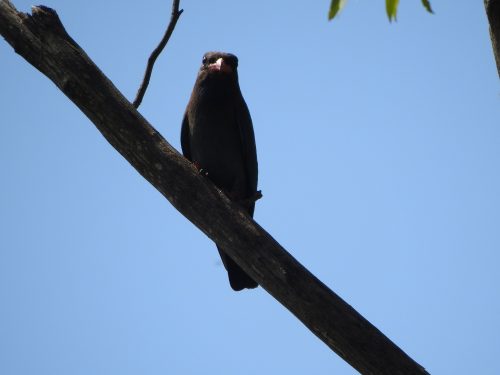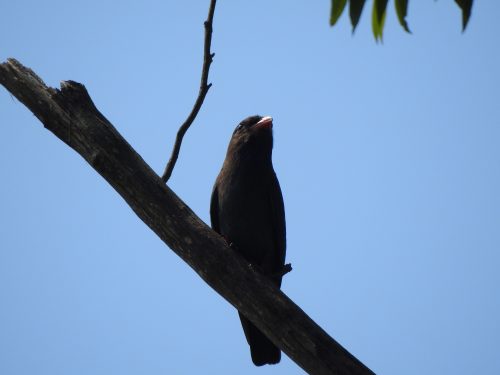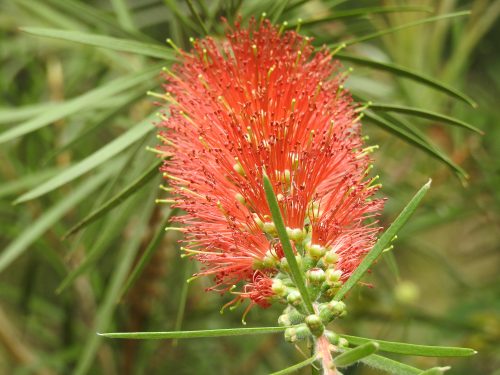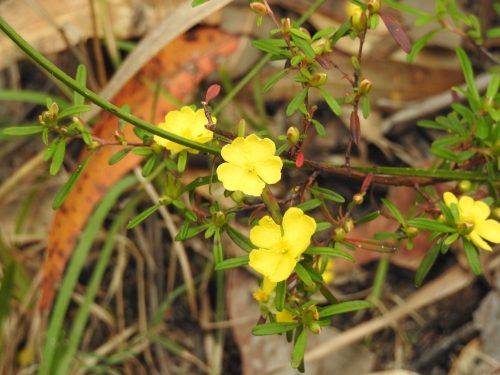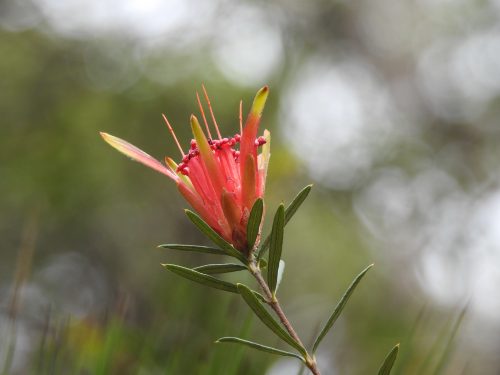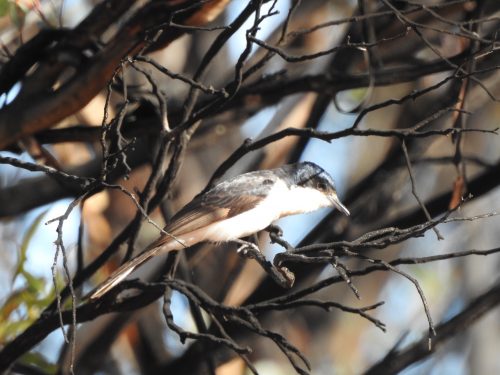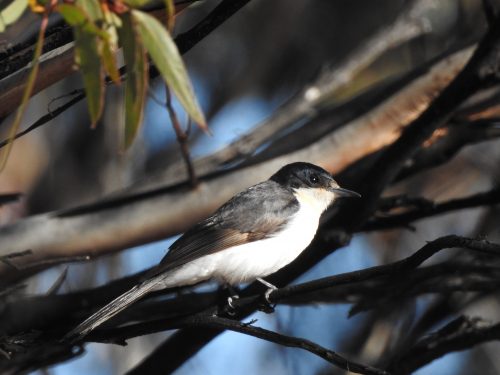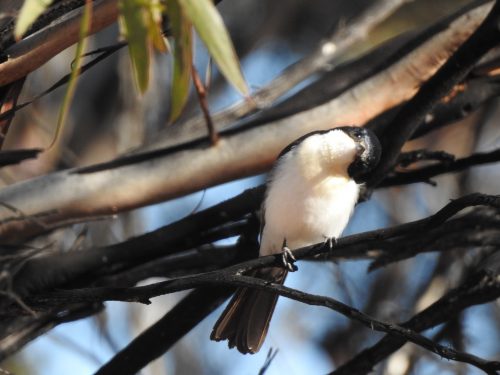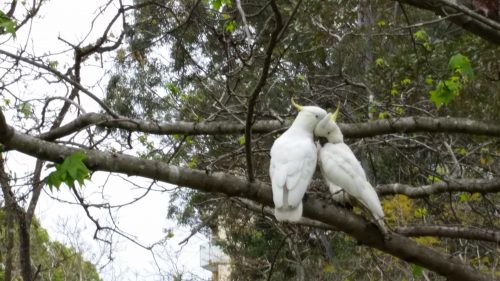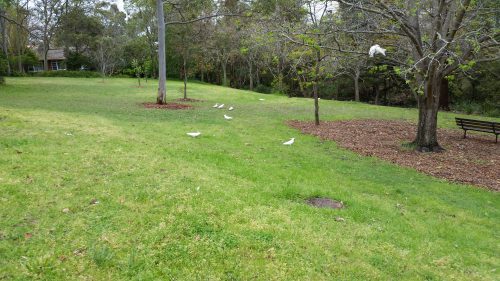Some Birds of the Lane Cove National Park
Over recent days I have posted some photos and articles about some of the birds I saw and photographed last month on a visit to the Lane Cove National Park in Sydney. I have visited this park on many occasions over recent years because it is only about a ten-minute drive from my son’s home.
Today I wish to post a compilation of some of my other photos taken on that visit in October. The first photo (above) is of a handsome looking Pied Currawong. This is a common and sometimes noisy bird in the park. Because of its loud, forest-penetrating call and its large size, it is quite conspicuous. At home in Murray Bridge, SA, I have the Grey Currawong as a regular visitor to my garden. Although it is also a prominent bird, it lacks the stark colours of the Pied variety.
The quiet and unassuming Black-faced Cuckoo-shrike is another bird I have often seen in the national park. It quietly goes about its life without too much noise and fuss. Its quiet and lovely churring call is diagnostic. Although it is mostly coloured plain grey, in certain light conditions it can appear almost bluish. As a child growing up in rural South Australia I seem to remember that this species was called a ‘blue jay’ while the White-winged Chough was a ‘black jay.’ That makes a lot of sense. The Black-faced Cuckoo-shrike is another regular visitor to my home garden.
On my visit to the Lane Cove National Park last month I was surprised by the lack of water birds along the river. I saw a solitary Little Egret, several Pacific Black Ducks and about three Dusky Moorhens, one being shown in the photo above. I also saw several groups of Australian Wood Ducks along with a few ducklings but nothing else. No cormorants, coots, Purple Swamphens or other species of duck.
Throughout the Lane Cove National Park, one can also observe the black-backed sub-species of the Australian Magpie. This is the common magpie around the Sydney area. At home in Murray Bridge SA, I have the White-backed Magpie as a resident breeding species in my garden. While there are magpies throughout the Sydney region, they are nowhere near as common as I am used to in the rural areas of South Australia. That is a pity because so many people are missing out on hearing the beautiful song of the magpie.
My last photo today is of one of the most loved Australian Birds, the Laughing Kookaburra. Instantly recognised by most people, enjoyed by many upon hearing its hearty laughter, it is one of our iconic, much-loved national symbols.
What most people do not realise is that this seemingly delightful bird species has a darker side to it. On more than one occasion I have seen kookaburras take sausages off of a hot barbecue plate, snatch food from the picnic table at my side, defecate on a picnic table from a branch above, and generally harass picnickers for free handouts of human food.
Please don’t feed them deliberately as human food is actually detrimental to their health. Please do not feed any of our native birds and animals; it is not good for them.
I’ll get off my soapbox now.
Good birding.
Trevor
P.S.: I would love to hear from my readers about their close encounters with our bird species. Use the comments section below.
Brush Turkeys in Lane Cove National Park
It is my impression that the people of Sydney, and Lane Cove in particular, as heartily sick of the Australian Brush Turkeys which invade their gardens. Granted – I will accept that this species of bird can create a mess with their scratchings in garden beds though I have not experienced that myself. I do not live in Sydney but I do visit my son and his family in Artarmon once or twice a year. While this bird occasionally comes into my son’s backyard, it never causes any harm. That is probably because there is nothing much for them to destroy; it’s mostly trees or bushes and the few garden beds in the front yard are very bushy too.
Usually, while I am visiting I like to spend some time in the Lane Cove National Park where the species is usually seen, sometimes in numbers. On my most recent visit last month I spent about four hours birding in the park. In total, I think I saw 5 different turkeys during my stay. I always like seeing them and taking photos of them. While they may be commonplace, ordinary and a nuisance to local people, I find them fascinating. This is because we do not have this species where I live in Murray Bridge, South Australia (an hour east of Adelaide). There are several introduced populations on Kangaroo Island just off the south coast of South Australia.
To be quite honest, however, there have been a few occasions where I have felt annoyance with this species. You can read about that incident here. Or in the further reading articles listed below.
Good birding,
Trevor
Further reading:
Dollarbirds in Lane Cove National Park
Last month I had the delight of spending a few weeks in Sydney with my son and his family. During this time I had the delight of attending my grandson’s 10th birthday party. These are special times indeed. Once the children had returned to school, I was free during the day to do some exploring on my own. On one of those days, I spent about four hours in the nearby Lane Cove National Park, a wonderful spot just ten minutes’ drive away. It was a mild, sunny day with a delightful breeze.
During my stay, I explored a few of the many picnic grounds and walking trails along the main road through the park, Riverside Drive. I made a pleasing list of the birds seen and heard, taking photos of those which came within camera range. I also found a lovely spot to have a picnic lunch and a cup of tea, overlooking one section of the Lane Cove River which runs through the park.
After lunch I still had about an hour to spare, so I drove over to the other side of the river and slowly drove along the Max Allen Drive, parking at the end of this road. I still had some hot water in my thermos so I made another cuppa. While I was enjoying my afternoon tea, I heard the calls of a bird I did not immediately recognise. One of the two birds landed where I could see it. I immediately recognised it as a Dollarbird. This was only my second ever sighting of this species – the other sighting being last year at the same time of year and in the same national park.
The two birds flew around a little while calling to each other. One landed within range of my camera so I took the photos shown above and below. Despite waiting for quite a long time, neither of the birds landed in a sunny position but stayed with the sun behind. I could have walked to the other side of the tree, but that would involve walking on the river. This means that my readers cannot see the lovely colours on the feathers. You can see a much better photo and more information about this species on the Birdlife Australia site here.
The Dollarbird is so-called because of the round, white spots underneath each wing when flying. Early observers thought that these looked like silver dollar coins. They are very prominent underneath a flying bird. They are widespread in eastern and northern parts of Australia but are absent in my home state of South Australia. (There are occasional sightings but these are vagrant individuals and are not resident in my state.) This species is a member of the Roller family of birds, with 11 other species in the family worldwide. The family name “roller” comes from their courtship display while airborne.
Next time I am in Sydney, I hope that I can get better photos of this species. I have also included below some of the wildflowers in bloom in the national park during my visit.
Good birding,
Trevor
Further reading:
Restless Flycatcher in Lowan Conservation Park
Several months ago I visited the nearby Lowan Conservation Park in South Australia. Lowan is a half-hour drive from where I live in Murray Bridge and just south of the small community of Bowhill. This small reservation is mainly mallee scrub with an understory of a great variety of plant species, including Acacias, Grevillia, Correa and many more.
It was a quiet, sunny winter’s afternoon and the birding was rather slow. To my delight, however, a Restless Flycatcher was flitting around nearby while I was having an afternoon tea break. Its Latin name is Myiagra inquieta which is very apt: “inquieta” is from the Latin inquietus which means “restless”. On every occasion I have seen this species it has indeed been restless. It is constantly on the move, often calling with a grinding sound which gives it one of its common names: scissors grinder.
While superficially it looks very similar to another member of the flycatcher family, the Willie Wagtail, it is easily distinguished by the white on the throat and its distinctive call. While it does occasionally wag its tail like the Willie Wagtail, it is more likely to hover just above the ground trying to disturb insects to snatch up for its next meal.
On this occasion, the bird I photographed for today’s post was very obliging. It would dart down to the ground to grab an insect and then return to the same perch in a tree nearby, usually always the same branch. This enabled me to focus on the one spot and to get some nice shots of it.
This species is widespread throughout eastern and southern Australia, but in my experience, it is not common anywhere in any numbers. The Willie Wagtail is far more common. I really enjoy coming across this species on my birding travels. I am happy to have the Willie Wagtail as a resident species in my garden, but it would be nice to have the Restless Flycatcher around more often than a fleeting visit every few years. I guess it is trying to tell me to get out birding more often.
I have included several more photos of the same bird below. I’m not sure what it was looking at in the final photo.
Good birding,
Trevor
Further reading:
Sulphur-crested Cockatoos preening
Last month on a visit to Sydney, I timed my arrival to coincide with my grandson’s 10th birthday party. I arrived about ten minutes before the guests started descending on the small park near Chatswood, a suburb of Sydney near where my son and his family live. It had been threatening to rain all morning, and the preceding few days had been quite wet. The children present at the party were all keen to get out and play. No amount of rain would deter them as we found out later.
While some games on the grass were underway, my attention was diverted from the children and their enthusiastic pursuits. A small flock of Sulphur-crested Cockatoos had flown in to a nearby part of the park. I slowly moved closer to get some photos of them on my phone. I just did not feel like walking all the way to the car to get my camera. The flock can be seen in the photo below, but I was more interested in the two birds in the photo above. They ignored me getting closer and closer. They appear to be whispering to each other in a quite romantic way. (Forgive me; it is the “story-teller” in me writing this.)
In reality, they are just preening each other’s feathers, something most parrots do regularly. In fact, all birds indulge in preening on a regular basis. Preening helps to keep the feathers clean and tidy, which in turn assists in flight and their general health and well-being. So, while I may have thought that this pair was being all loving to one another, what they are doing is actually very practical help.
Good birding,
Trevor
